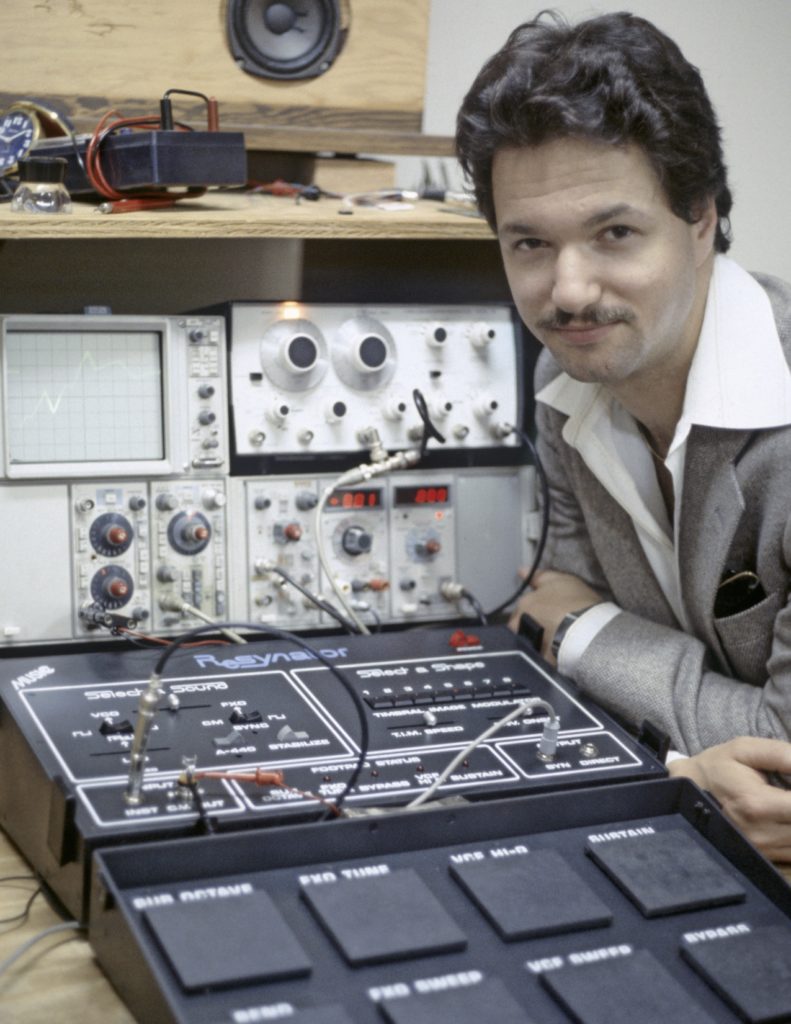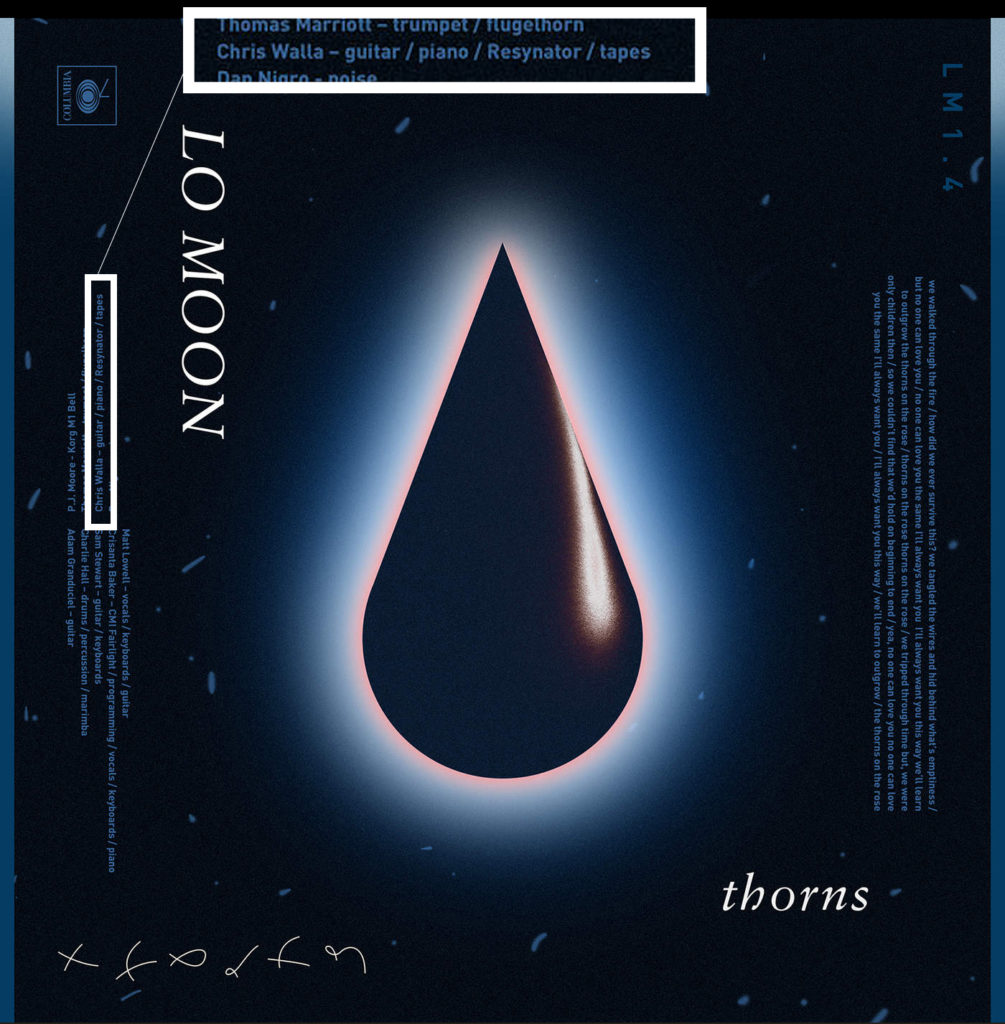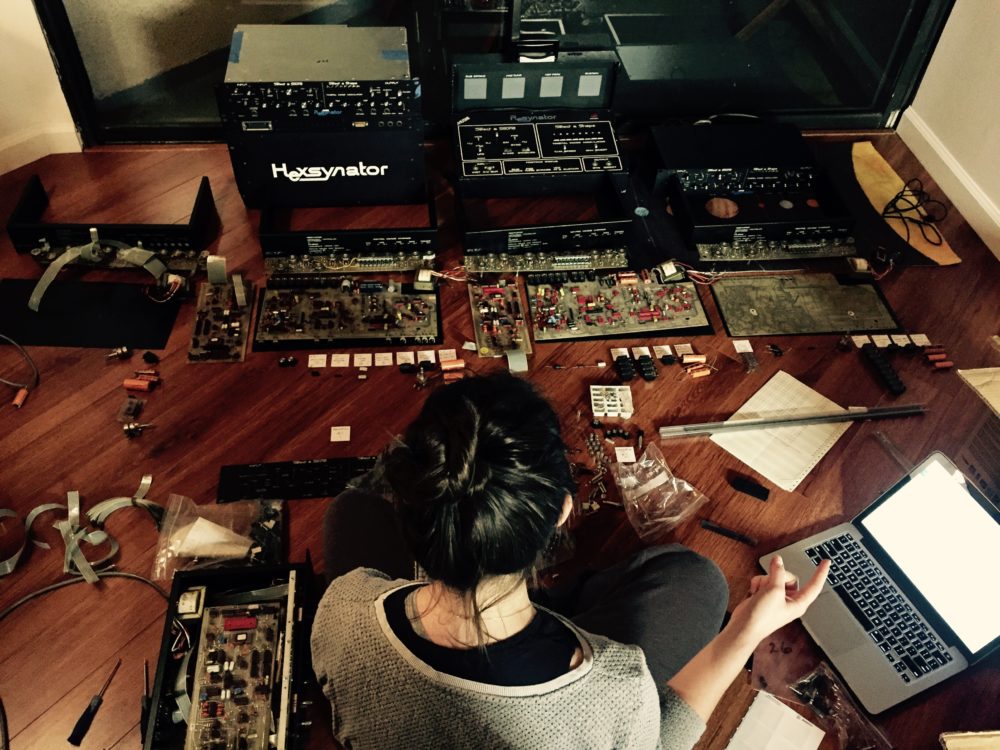It’s Alive! Resurrecting the Resynator — One Step Closer to a Classic Synth’s Return
Alison Tavel is on a mission to bring a legendary – but little-heard – synth called The Resynator back to life. It’s an epic saga that’s about way more than just gear, as she seeks to reignite the life force of its inventor Don Tavel – her late father that she never knew. See Entry 1 here.
Getting the original Resynator to work was no simple task. When we first put it on the bench, it powered on fine, and some of the synth aspects still worked, but that was about it. Still, after 25 years of living in a box in the attic, I thought that was pretty good. Nothing digital seemed to be working though, as it was not tracking any of the guitar that we had plugged into it.
We (and when I say “we” I mean Mike Beigel, founder of Mu-Tron) figured out we needed to replace the Digital Frequency Analyzer, the custom processor that my dad invented to detect pitch. The one in the rack-mount was bad, but fortunately we had a couple other really interesting units to pull parts from…
The pedalboard version of the Resynator (originally called TH’PEDAL) was the first version of the Resynator, with versions dating back to 1974. In 1979 though, he and Mike decided to change it into a rack-mount as they thought that would sell better in 1980.
Most likely 6-10 units were built of the rack-mount version, but only the one I had and a half-built version that Mike had remained to our knowledge. The final invention in this series was built a few years later in 1982, called the Hexsynator. This was a polyphonic version of the Resynator and was built to work solely with a Roland guitar that had a 24-pin cable connection. TH’PEDAL and the Hexsynator are two really interesting inventions that I hope to one day resurrect, but for now – they were our only hope to get the first rack-mount to work.
We ended up taking the DFA chip that was in the pedalboard and testing it out in the rack-mount and it worked! That wasn’t the end of the job, but everything fell into place (slowly but surely) after that. Eleven months after I had gotten it from the attic and nine months after I had left it with Mike, it was finally working!

Resynating With People:
The next step for me was to get it in front of musicians and have them give me feedback on this thing – was it cool? Was it unique? Was it worth it? I luckily knew a handful of really gifted musicians and producers who had a good knowledge of synthesizers and everyone came back with glowing reviews.
Among them was my friend Sam Stewart. He was about to record his first record with his band Lo Moon. After they were finished with it, I got an email from Chris Walla – the producer of the record, telling me how much he loved using it:
“I fell head over heels for it almost immediately — it’s unlike anything I’ve used before. Beautiful, dense, complex, unpredictable in all the best ways.”
At this point the band had only released a few songs from the record but the Resynator made it onto the song Thorns. The funny thing is that the Resynator can sound like anything – so when I listened to the song I was thinking, “Okay, THAT is definitely the Resynator…..no THAT has to be it. Or that.” I STILL don’t know where it is in the track but when I find out – I will let you all know!

Resynator #2:
The response from this and the others who had given me feedback definitely made me wonder if I should build more. I decided since Mike’s Resynator was half built that it wouldn’t be a bad idea to build one more so I had a backup in case one were to stop working, or obviously to be able to get them in front of more people.
Resynator #2 came together beautifully – with the help of Richard Lingenberg from Lingenberg Sound in Costa Mesa, CA. He was able to quickly and effectively put together the 2nd Resynator using mostly new but some existing original parts. I met him down in Mike’s lab to see them calibrate it together and at the end of the night it was working better than #1!
The cool part in this process was that sometimes he would notice the same error in both units – meaning the Resynators were both calibrated correctly, but the error meant there was a design flaw. These little design flaws give it character, and no one has been bothered by them, so it will be important for me to think about that in the future when considering re-releasing Resynators on the market (which we’ll cover next time!)
Stay on top of breaking Resynator developments on Instagram and Facebook.
Donate to help build more Resynators!
https://www.gofundme.com/resynator
Documentary Teaser:
password: synth
–– Alison Tavel
Please note: When you buy products through links on this page, we may earn an affiliate commission.









